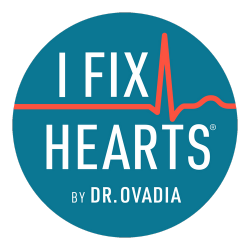Conversations about metabolic health are more complex than they need to be. This is particularly true when talking about the individual components that make up our metabolic health, including fatty acids like triglycerides.
You’ve probably heard of triglycerides before — especially if you’ve been diagnosed with arteriosclerosis — but you’ve probably not been told much about what it does or how it affects your heart. This isn’t your fault at all. Truthfully, it’s the product of symptom-first healthcare that inadvertently neglects patient education.
The good news is that triglycerides are less complicated than you might believe. And understanding how they interact with your body and support your heart is an excellent way to reclaim your metabolic health.
Understanding triglycerides in the body
Triglycerides are fatty acids that circulate in the blood. Any food that isn’t immediately used by your body is converted into triglycerides, which are then stored in the body as fat tissue. Your body manufactures some of what it needs and gets the rest from food, especially simple carbs and processed sugars like candy, bread, and fries. Its purpose is to fuel your body both now and in the future, since its conversion to fat means you’ll be prepared for long waits between meals (if necessary).
Everyone has stored body fat as a result of triglycerides. This is normal, as your body needs it to function effectively. But like anything else, excess can be damaging or increase your risk of chronic diseases — including stroke, heart attack, and other life-changing cardiac events.
A healthy adult should have a triglyceride level less than 150 mg/dL. Anything above that may be a cause for concern. It’s a good idea to get a lipid panel done at least once per year to look for abnormalities, although you may want to do this more often if you’re trying to track improvements.
Triglycerides vs cholesterol
Conversations about triglycerides invite brief comment on cholesterol, especially since they work together in so many ways. Both are manufactured by the liver, transported by blood, and necessary for maintaining good metabolic health. However, there are a few key differences you should know:
- Triglycerides are fatty acids. Cholesterol is a type of lipid.
- Triglycerides store unused energy. Cholesterol repairs cells and releases hormones.
- Triglycerides are the biggest component of adipose tissue (body fat). Cholesterol is not a component of this.
You can think of triglycerides like an internal battery, while cholesterol functions more like a toolbox. Triglycerides provide immediate and future energy. Cholesterol repairs and regulates the body. They’re a dynamic duo that are extremely important to your overall longevity.
In fact, triglycerides and cholesterol work hand-in-hand:
- Cholesterol must be ‘packaged’ with triglycerides to get around your bloodstream
- Inflammation spikes cholesterol, which in turn spikes triglyceride levels
- High triglycerides can lead to cholesterol buildup in your arteries
To summarize: cholesterol and triglycerides are not the same thing. But they both play an important role in keeping you happy, healthy, and metabolically sound.
Managing triglycerides for metabolic health
If you want to maintain your metabolic health for years to come, you’ll need to focus on the big picture — starting with lifestyle changes that accommodate triglyceride repair.
However, a healthy metabolism needs triglycerides to function. Therefore, concentrating on eliminating your triglycerides completely is not a viable approach.
I suggest taking actions that restore your body holistically:
- Let’s start with your diet. Not all foods create the same triglyceride response. As discussed, eating simple carbohydrates will cause a jump in your levels. In contrast, whole, real foods like proteins and vegetables, prevent your numbers from spiking. Rebalance your diet by introducing healthier foods and cut out as many processed carbs as you can.
- Next, start exercising. This can be as simple as a daily walk or bike ride, but make sure to do a little something every day. Dedicated exercise uses more of your body’s energy than basic daily tasks, and also builds metabolically active muscle that burns triglycerides in your blood. I recommend starting with resistance training and building a personalized regimen over time. And remember: exercise is cumulative. If you don’t have a full half hour to spare, split it up throughout the day.
- Focus on an integrative approach. The factors of metabolic health are tied at the hip, and lowering one number into a healthy range will help you regulate others — especially triglycerides. You may want to consider a metabolic health coaching program that focuses on the other four factors of metabolic health, including waist circumference, blood pressure, blood sugar, and of course, cholesterol.
Triglycerides are a perfectly normal part of the human bloodstream. The problem for our metabolic health comes from unconsciously making poor food choices, neglecting daily exercise, or following outdated ‘guidelines’ from organizations that have major conflicts of interest.
If you really want to dig into the meat and potatoes of triglycerides, I highly recommend you check out my introduction to lab work course. We’ll take a laser-focused look at lipid panels and blood testing, then discuss target numbers, suggested frequencies, and what to expect on the day of your draw.
